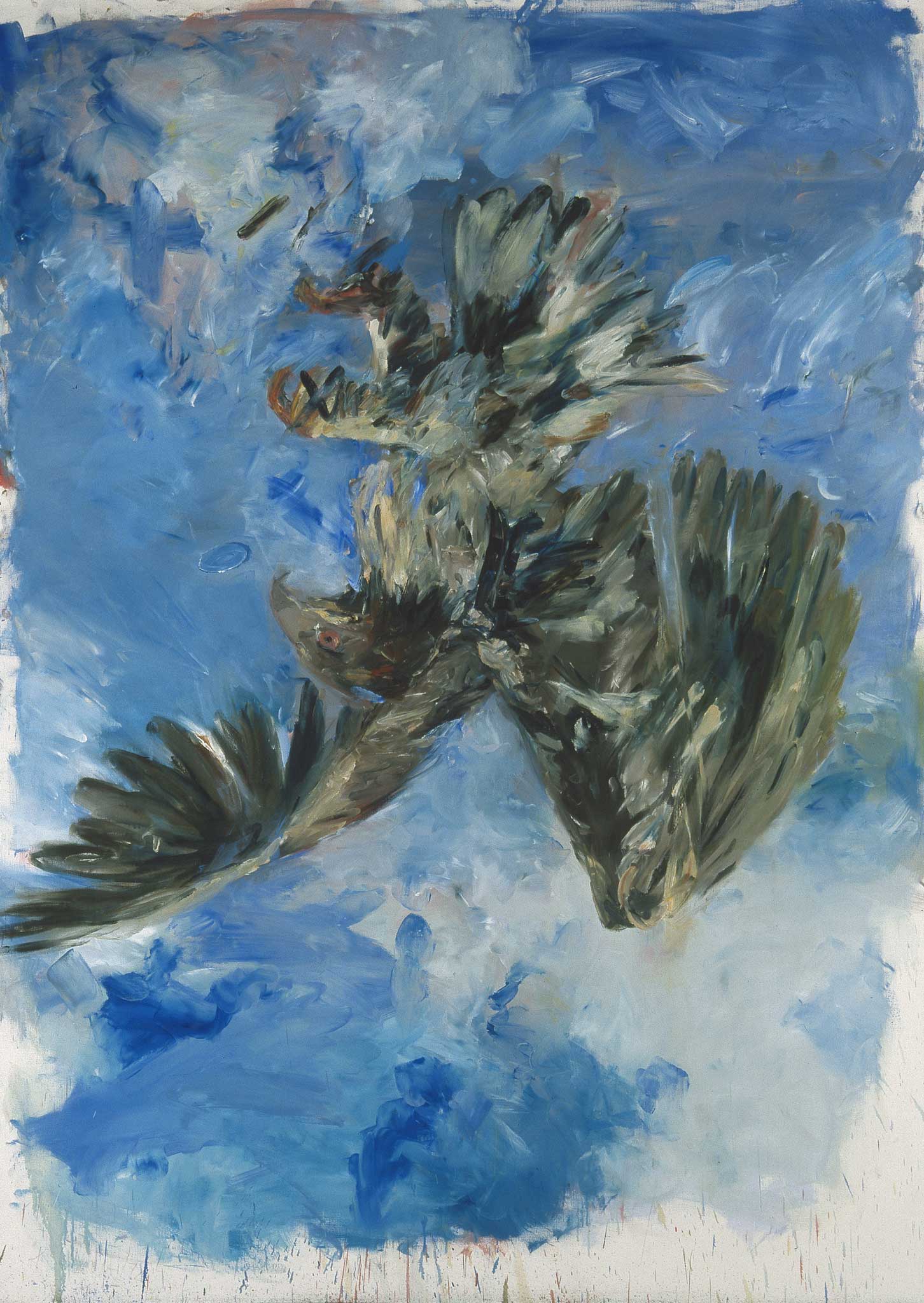Great Works: Finger Painting - Eagle, 1972, by Georg Baselitz
Pinakothek der Moderne, Munich

Your support helps us to tell the story
From reproductive rights to climate change to Big Tech, The Independent is on the ground when the story is developing. Whether it's investigating the financials of Elon Musk's pro-Trump PAC or producing our latest documentary, 'The A Word', which shines a light on the American women fighting for reproductive rights, we know how important it is to parse out the facts from the messaging.
At such a critical moment in US history, we need reporters on the ground. Your donation allows us to keep sending journalists to speak to both sides of the story.
The Independent is trusted by Americans across the entire political spectrum. And unlike many other quality news outlets, we choose not to lock Americans out of our reporting and analysis with paywalls. We believe quality journalism should be available to everyone, paid for by those who can afford it.
Your support makes all the difference.Here it is, in all its pathetic plunging down from the sky, the collapsing umbrella of a sad and wind-buffeted eagle. This is just one of the many eagles that Georg Baselitz has painted during his lifetime, from his earliest back in 1953, when he seemed to be engaged in a kind of natural history painting, to the very recent past, when he has been "re-mixing" his old motifs, among which, again and again, we find this same eagle, sparer, tauter now, less richly colourful, as much a kind of near-skeletal haunting of an eagle as a representation of the mighty bird itself.
What is an eagle to a painter, you might profitably ask? Given that Baselitz refuses to accept narrative or political interpretations of his work – after all, this is why he began to invert his motifs about 40 years ago, in order to let the narrative content spill out and drain away – we should not hurry to call this eagle an emblem of the doomed Reich, a symbol of Roman power, an image of Zeus preying upon the hapless Ganymede or any of those other multifarious interpretative possibilities. The very fact that it is upside down increases its sense of helplessness. It could be the carcass of an eagle, suspended from a hook, ripe for the plucking.
What cannot be denied is the ferocity of the painter's attack. It feels as if it has been done quickly, as if the work of making it has been not so much the consequence of a careful, meditative appraisal, as a kind of sparring with what it represents – Baselitz has always painted at speed, and that speed has increased with the years. This eagle is finger-painted, in deft, smudgy touches and tampings. The blue of the sky has a rushing turbulence. It proclaims itself both to be a work in the making, and a made thing – there is no smoothing away of roughness at all, no easy illusionism here.
The turmoil is on the very surface of the canvas. Look at those splatterings and streamings of paint at its foot. They accentuate our belief in the sudden, human drama of it all, that this image does not quite fill the entire canvas, that there is this unpainted area at the bottom edge. The bird itself seems to be falling, breaking asunder into bits of itself, even as we stare at it, as if, when it hits ground, it will be nothing but a tumble of spiky spars and a pother of wind-blown feathers. And yet it is a mighty and commanding presence for all that. It seems to command the space through which it descends, this inverted "v" of a thing, in such a pouring rush, and the sky itself, exploding, orchestrally billowing, seems to be concerned to contextualise and give moment, added significance, to the drama of its tragic fall.
Even though Baselitz warns us again and again not to read storytelling of any description into his images, it is impossible not to do so. As a boy in his father's school house in Dresden, he heard the Allied bombers flying over. He witnessed the destruction of a great city and the moral degradation of Germany itself. During the 1960s he and other painters of his generation – Anselm Kiefer, for example – had a great theme forced upon them: what was it to paint again in the aftermath of all that had happened? And this is a part of Baselitz's response, this eagle, reprised many times, over a period of more than half a century, that mighty, prideful bird with a ferocious, attent eye, magnificent, doomed raptor, symbol of a botched civilisation, ever falling towards the abyss.
About the artist: Georg Baselitz (b1938)
The violent and distinctive images of Georg Baselitz are the product of a moment when German painting was seeking to find a new identity for itself in the aftermath of the Second World War. Baselitz, who was born in the small village of Deutschbaselitz, became notorious for images created in the 1960s of raw, dwarfish human figures that seem nothing but the expressionism of their brutish and unredeemed reality. His rough-hewn sculptures are often made with a chainsaw.
Join our commenting forum
Join thought-provoking conversations, follow other Independent readers and see their replies
Comments